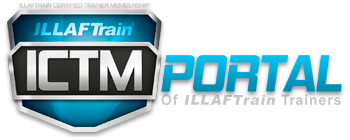Implementing Microsoft Windows 2000 Professional and Server
Course id: 8410
Duration: 18
introduction
| This course provides students with the knowledge and skills necessary to install and configure Microsoft Windows 2000 Professional on stand-alone and client computers that are part of a workgroup or domain. In addition, this course provides the skills and knowledge necessary to install and configure Windows 2000 Server to create file, print, Web, and Terminal servers. It also provides students with the prerequisite knowledge and skills required for Course 2153—Implementing a Microsoft Windows 2000 Network Infrastructure. |
Prerequisites
|
Audience
| Who consider about to learn Network |
Objectives
At the end of the course, students will be able to:
|
Content
|
Module 1: Installing or Upgrading to Windows 2000 Topics Preparing for Installation Installing Windows 2000 Professional from a Compact Disc Installing Windows 2000 Advanced Server from a Compact Disc Upgrading to Windows 2000 Professional Upgrading to Windows 2000 Advanced Server Identifying Setup Errorsv Lab Installing Windows 2000 Skills Students will be able to:
Topics Configuring and Managing Hardware Configuring Display Options Configuring System Settings Configuring the Desktop Environment Configuring Internet Options for Client Computers Labs Creating and Using Hardware Profiles Modifying Startup and Recovery Options Configuring Internet Options Skills Students will be able to:
Topics Windows 2000 Connectivity Connecting to a Microsoft Network Connecting to a Novell NetWare Network Labs Configuring and Testing IP Addresses Installing and Configuring Gateway (and Client) Services for NetWare Skills Students will be able to:
Topics Introduction to User Accounts Guidelines for New User Accounts Creating Local User Accounts Creating and Configuring Domain User Accounts Setting Properties for Domain User Accounts Customizing User Settings with User Profiles Best Practices Labs Creating Local User Accounts Creating and Modifying Domain User Accounts Skills Students will be able to:
Topics Introduction to Windows 2000 Groups Implementing Groups in a Workgroup Implementing Groups in a Domain Best Practices Lab Creating a Global Group Skills Students will be able to:
Topics Introduction to NTFS Permissions How Windows 2000 Applies NTFS Permissions Using NTFS Permissions Using Special NTFS Permissions Compressing Data on an NTFS Partition Configuring Disk Quotas on NTFS Partitions Securing Data by Using EFS Labs Using NTFS Permissions Configuring Disk Compression and Quotas Securing Files by Using EFS Skills Students will be able to:
Topics Introduction to Shared Folders Creating Shared Folders Combining NTFS and Shared Folders Permissions Using Administrative Shared Folders Publishing a Shared Folder in Active Directory Configuring Shared Folders by Using Dfs Labs Sharing and Securing Network Resources Configuring Domain-based Dfs Skills Students will be able to:
Topics Monitoring Event Logs Using Task Manager to Monitor System Resources Using System Monitor to Monitor System Performance Using Alerts Optimizing Performance Labs Using Task Manager and Event Viewer Monitoring System Performance Skills Students will be able to:
Topics Helping Protect Desktops and Services by Using Security Policies Auditing Access to System Resources Labs Configuring Windows 2000 Security Settings Configuring Auditing Skills Students will be able to:
Topics Introduction to Windows 2000 Printing Adding a Printer Configuring a Network Printer Configuring Internet Printing Labs Installing Printers on a Print Server Installing a Client Printer and Managing Printers Skills Students will be able to:
Topics Configuring Hardware for Mobile Computing Configuring Power Management Options for Mobile Computing Making Files Available for Offline Use Connecting to Networks and Computers Identifying Solutions to Mobile Computing Problems Labs Configuring Power Management Options Configuring Offline Files Skills Students will be able to:
Topics Windows 2000 Disk Types Creating Partitions on a Basic Disk Creating Volumes on a Dynamic Disk Performing Common Disk Management Tasks Best Practices Labs Working with Dynamic Disks Creating and Mounting a New Volume Skills Students will be able to:
Topics Introduction to Disaster Protection Configuring an Uninterruptible Power Supply Implementing Fault Tolerance by Using RAID Backing Up and Restoring Data Using Disaster Recovery Tools Labs Implementing Fault-Tolerant Volumes Backing Up and Restoring System State Data Skills Students will be able to:
Topics Introduction to Terminal Services Planning the Installation Installing Terminal Services Configuring Terminal Services Establishing a Terminal Session Configuring Session Settings Installing Applications on a Terminal Server Labs Installing Terminal Services Installing an Application Skills Students will be able to:
Topics Deploying Windows 2000 Performing a Manual Network Installation Customizing Installations and Upgrades by Using Switches Installing Windows 2000 Using the Setup Manager Wizard Using Disk Duplication Installing Windows 2000 Using RIS Troubleshooting Windows 2000 Setup Labs Creating an Answer File for an Unattended Installation Running the System Preparation Tool Skills Students will be able to:
Topics Common Implementation Features Implementing a File Server Implementing a Print Server Implementing an Application Server Implementing a Web Server Routine Administration Tasks Skills Students will be able to:

|

